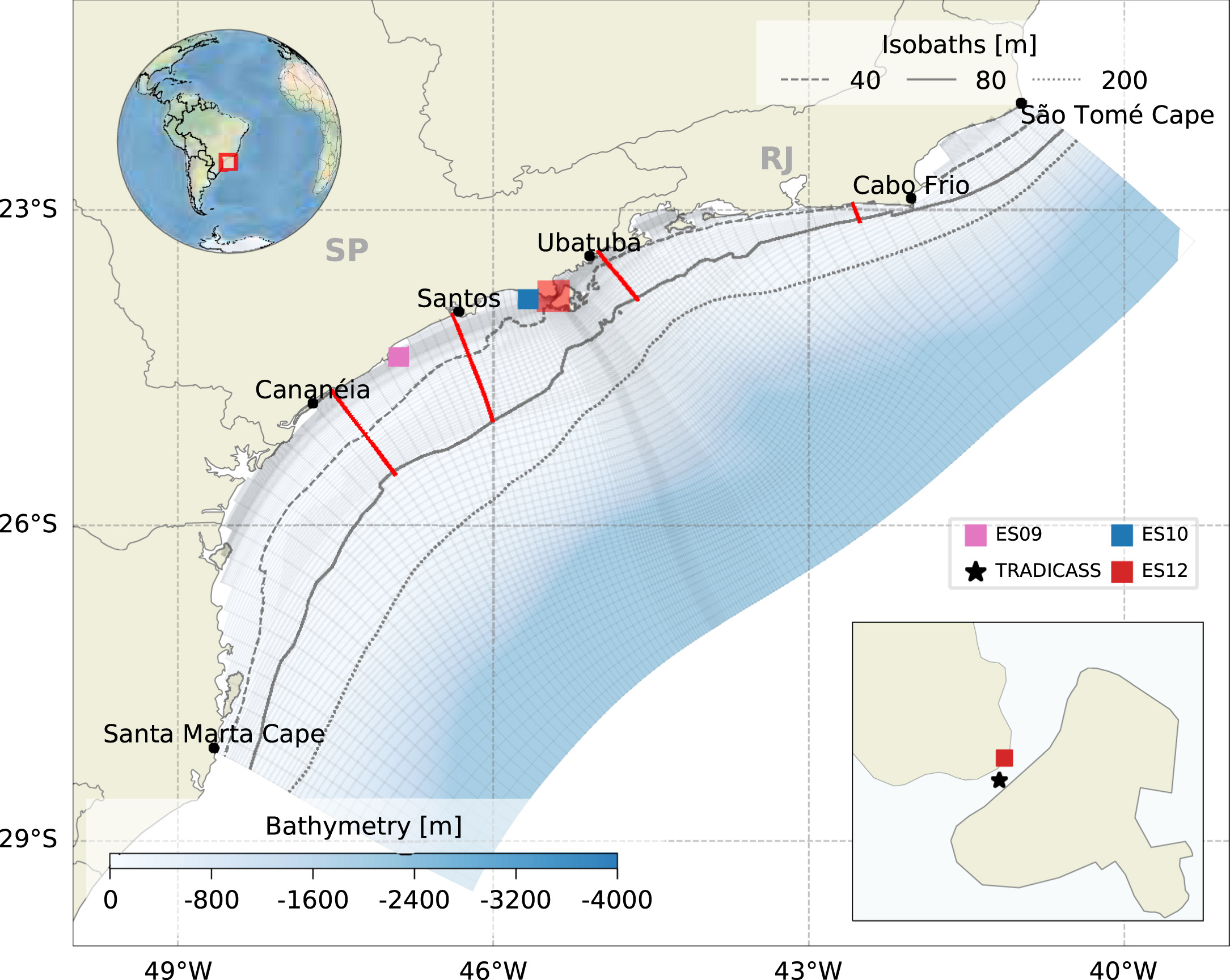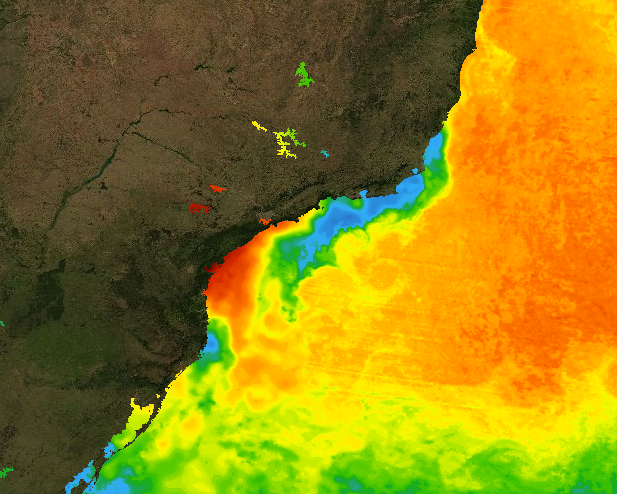The atmospheric blocking influence over the South Brazil Bight during the 2013–2014 summer
Silva and Dottori (2021), published in Regional Studies in Marine Science.
Atmospheric blocking events interrupt or displace mid-latitude westerly jet and synoptic scale transient weather systems during several days or weeks. Their presence is associated with several extreme weather events, such as severe droughts, striking heatwaves, and flooding. An example of this rare atmospheric condition was the extreme blocking event occurred during the 2013-2014 summer in the South Brazil Bight. During this period, the atmospheric blocking changed the wind regime in the region by blocking northeastward winds, associated with cold fronts. This high-pressure system also suppresses cloud formation, resulting in extreme incoming shortwave radiation. In other words, this event drastically changed the ocean forcings and, consequently, the ocean conditions in the South Brazil Bight, or SBB, (Figure 1.b).


We applied the Estuarine, Coastal and Ocean Model (ECOM) to recriate the conditions during these event over the SBB (Figure 1.a). We used ERA5 dataset as wind and solar radiation input, reduced climatological freshwater discharge, considering the drought episode during the event, and a climatological thermohaline structure. Our results were validated with the Skillmot paramter, as well as with Taylor diagram, confronting our numerical results against *in situ* observations (temperature and currents). We also applied a qualitative assessment, comparing our SST fields with remotely sensed SST (GHRSST).
Our results suggested an increase in the coastal upwelling off Cabo Frio (RJ), which was an expected response. Upwelled waters were transported southward, regulating the heating caused by the increase in the incomind shortwave radiation. This balance was observed the central zone of the SBB. At the south zone, however, the absence of cold waters lead to the development of a warm water pool (Fig 2.a and b), that may be part of the marine heatwave described by Rodrigues et al. (2019) in the southwestern South Atlantic.
Nearshore (H < 40m) it was observed higher water temperatures during the atmospheric blocking event, along the whole shelf. Even in the north zone of the SBB, where upwelled waters are found close to the shore. We hypothesize that the heated waters nearshore act as a thermal block, preventing upwelled waters to reach shallower waters, reducing the temperature.

Related talks and presentations
-
Silva, D., and Dottori, M. (2019). Anomalous wind-driven circulation during the 2014 summer on the South Brazil Bight. Latin-American Physics of Estuarine and Coastal Ocean (LAPECO). Oral presentation [slides].
-
Silva, D. and Dottori, M. (2019). Resposta da ressurgência costeira frente a presença de um bloqueio atmosférico na Plataforma Continental Sudeste: um estudo numérico do verão de 2014. Simpósio sobre Ondas, Marés, Engenharia Oceânica e por Satélites (OMARSAT). [poster].